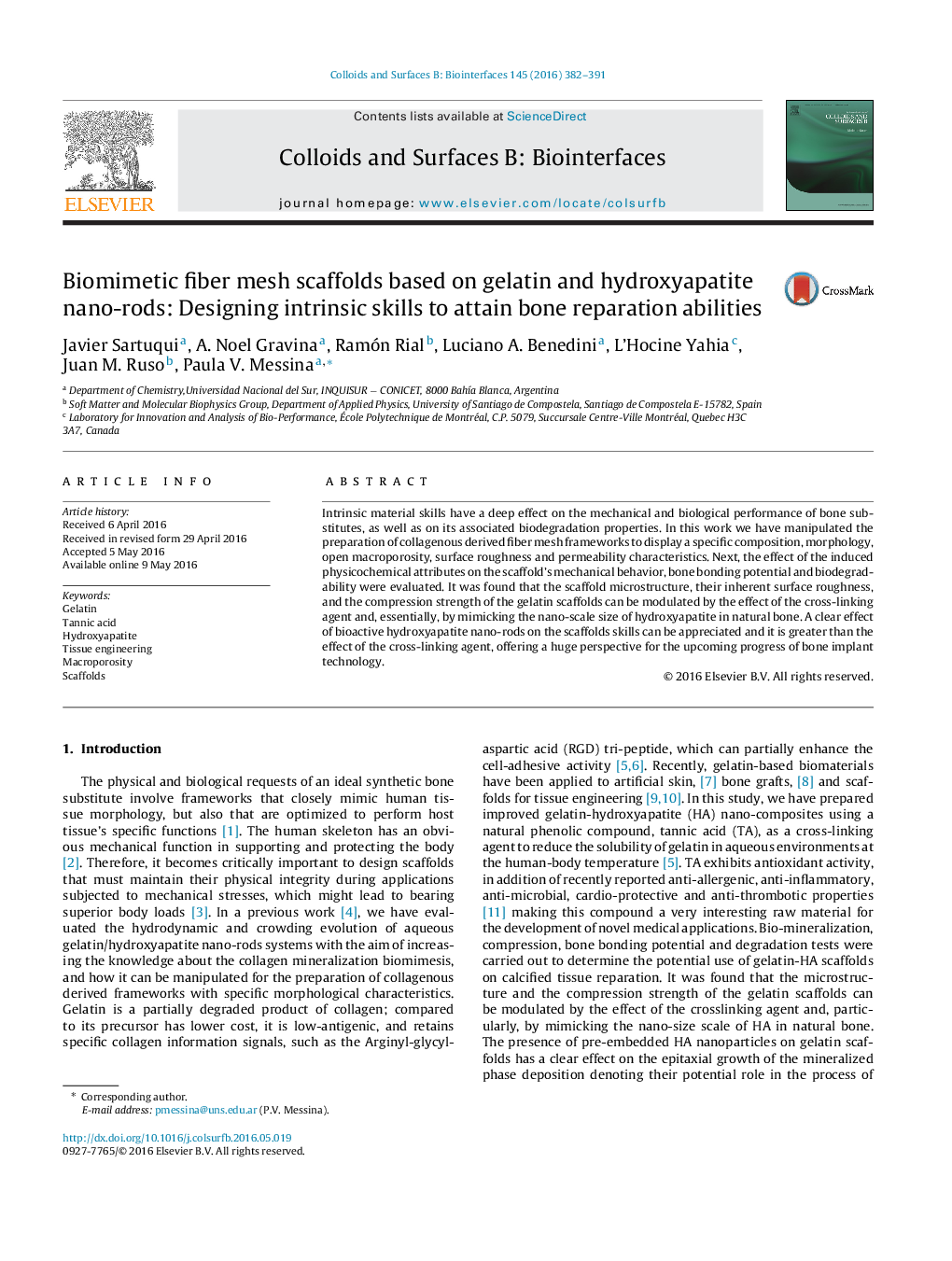| Article ID | Journal | Published Year | Pages | File Type |
|---|---|---|---|---|
| 598961 | Colloids and Surfaces B: Biointerfaces | 2016 | 10 Pages |
•Mechanically robust fiber mesh scaffolds displaying a porous structure are obtained.•Scaffolds exhibited a definite degree of roughness in the pore wall surface.•Highly cross-linked scaffold shows a facilitated entrapment of fluids.•Hydroxyapatite nano-rods reinforce the covalently cross-linked GE-TA network.
Intrinsic material skills have a deep effect on the mechanical and biological performance of bone substitutes, as well as on its associated biodegradation properties. In this work we have manipulated the preparation of collagenous derived fiber mesh frameworks to display a specific composition, morphology, open macroporosity, surface roughness and permeability characteristics. Next, the effect of the induced physicochemical attributes on the scaffold’s mechanical behavior, bone bonding potential and biodegradability were evaluated. It was found that the scaffold microstructure, their inherent surface roughness, and the compression strength of the gelatin scaffolds can be modulated by the effect of the cross-linking agent and, essentially, by mimicking the nano-scale size of hydroxyapatite in natural bone. A clear effect of bioactive hydroxyapatite nano-rods on the scaffolds skills can be appreciated and it is greater than the effect of the cross-linking agent, offering a huge perspective for the upcoming progress of bone implant technology.
Graphical abstractMechanically robust Gelatin/nano-Hydroxyapatite scaffolds, exhibiting a highly interconnected fiber mesh structure. GE: Gelatin; HA: Hydroxyapatite; TA: Tannic Acid; ε: Compressive Modulus; σY: Yield Strength; σult: Ultimate Strength.Figure optionsDownload full-size imageDownload as PowerPoint slide
